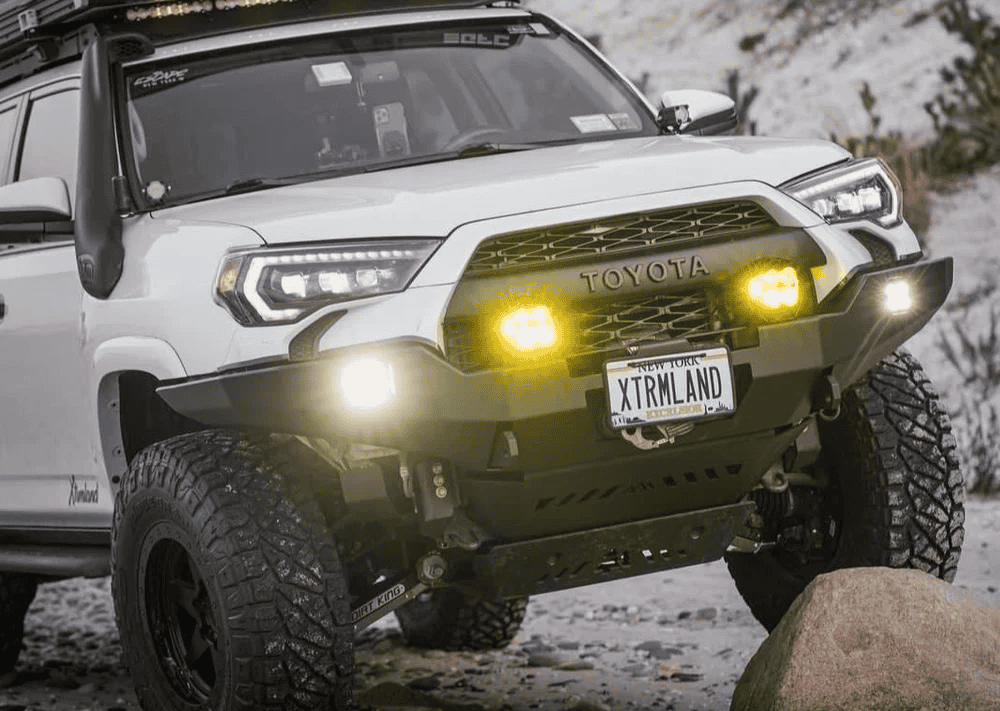Overland Vehicles

Water planning begins with honest math. Estimate daily use for drinking, cooking, dish duty, and rinsing. Many travelers budget three to five gallons per person per day for comfort, less if you are strict about conservation. Choose a tank size that fits your trip length and refill options. Short trips near towns can run smaller tanks, while remote routes demand larger stores and a better refill strategy.
Tank placement matters as much as size. Keep mass low and near the vehicle center to protect handling. A flat or wheel well tank tucked against the bed or in a canopy cabinet saves space while keeping the center of gravity predictable. Use food grade polyethylene tanks with baffles to reduce water slosh on rough roads. Secure the tank on isolation mounts and with metal straps to prevent rub points.
Plan a simple plumbing path. A typical layout runs tank to prefilter to pump to accumulator to manifold that feeds sink, shower, and heater. Use PEX or reinforced hose rated for potable water. Color code lines for cold and hot to simplify service. Add shutoff valves at key points so you can isolate a branch for repair without draining the system.
Water weighs about eight point three pounds per gallon. A fifty gallon load adds serious mass, so confirm axle ratings and tire capacity. If you carry jerry cans as reserve, mount them outside the cab for safety but shield them from heat and sun.
A twelve volt diaphragm pump in the three gallon per minute, forty five to fifty five psi range suits most builds. Pair it with an accumulator to smooth pulsation and reduce pump cycling. Mount the pump on rubber feet and use flexible loops in the line to keep noise down.
Treat all source water as suspect until proven clean. Start with a sediment prefilter around twenty microns before the pump to protect components. At the tap, use a carbon block filter to improve taste and remove chlorine and organic compounds. For true purification in questionable areas, add a final stage such as ultraviolet or a rated hollow fiber element.
Keep a dedicated fill hose and an inline prefilter for water taken at campgrounds or from spigots. Use sealed caps on hose ends and store the hose away from fuel or soil. Sanitize tanks and lines several times a season with a measured bleach solution, then flush until odor free. Replace filters on schedule and carry spares on long routes.
Grey water deserves the same forethought. A small underbed tank or a portable container with a vent and drain keeps camp tidy and leaves no trace. Strain food scraps at the sink to protect the grey tank and minimize odor. Know local rules for disposal and use dump points where provided.
Many travelers separate systems. Keep a large tank for general use and a smaller, protected reservoir or filter bottle for drinking. This redundancy adds peace of mind if a filter clogs or a line leaks.
When drawing from natural sources, prefilter with a cloth or mesh bag to remove silt before your main filter stages. Let sediment settle in a bucket before pumping to extend filter life.
Hot water is a comfort that can be simple or sophisticated. A compact heat exchanger tied to engine coolant provides hot water while the engine runs. Portable propane heaters give on demand warmth with careful venting and carbon monoxide awareness. Electric options exist but pull significant power, so match them to your battery bank and charging strategy.
Cold weather demands protection. Insulate lines, avoid low sags where water can sit and freeze, and route plumbing within conditioned spaces when possible. Install drain valves at the low points so you can purge lines quickly. If deep winter travel is likely, consider a bypass loop and use non toxic RV antifreeze for full winterization when the vehicle is stored.
Reliability grows from simplicity. Keep fittings accessible, label lines, and use quality clamps and PEX crimp rings. Add a water level sender or a clear sight tube to track remaining capacity. Pack a spares kit with hose, clamps, a pump head rebuild kit, and extra filters. A short maintenance routine after each trip extends system life and maintains water quality.
Food grade quick disconnects at the tailgate make outdoor showers and gear wash easy. A spray wand with adjustable pattern conserves water and rinses mud without waste.
Pressure test the system at home. Run the pump, open each tap, check every connection for weeping, and verify the heater cycles correctly. Fine tune flow restrictors at fixtures to balance comfort and conservation.
When you are ready to turn a plan into plumbing that works hundreds of miles from help, design and installation quality make the difference. If your build is part of a larger rig project, explore our overland rigs approach to see how water ties into power, storage, and recovery. For tailored layouts, professional plumbing, and filtration that matches your routes, our custom overland upfit service maps capacity, components, and mounting to your exact truck and travel style. Curious about the process and what it is like to work with us end to end? Start with Why choose OZK Customs to see our build philosophy and client experience.
The goal is simple. Clean water when you need it, quiet hardware that disappears into the background, and a layout that is easy to service on the trail. Bring your wish list and your routes, and we will help transform them into a system that makes every mile smoother.
Ready to turn your plan into a clean, quiet, and trail proven water system? Book a consult with OZK Customs and get a tailored design, pro plumbing, and field tested filtration for your build. Share your use case and we will map the right capacity, layout, and gear to keep water flowing wherever you roam.
ADDRESS:
6159 E Huntsville Rd, Fayetteville, AR 72701
PHONE:
(479) 326-9200
EMAIL:
info@ozkvans.com